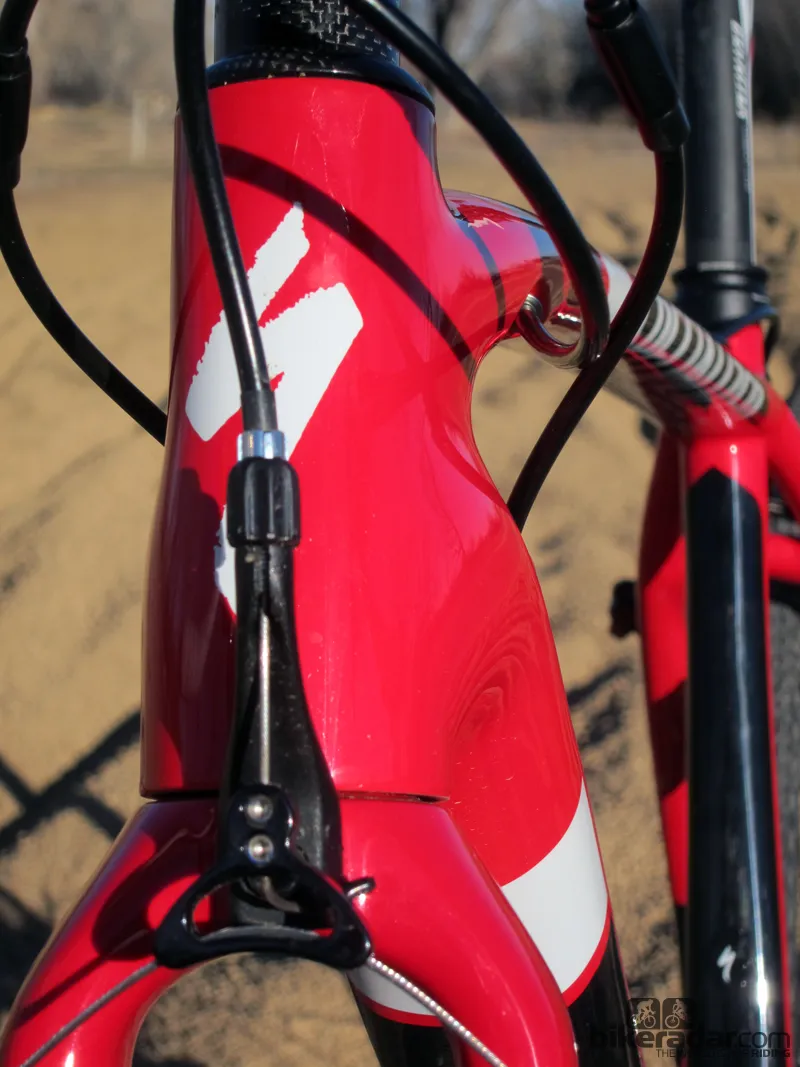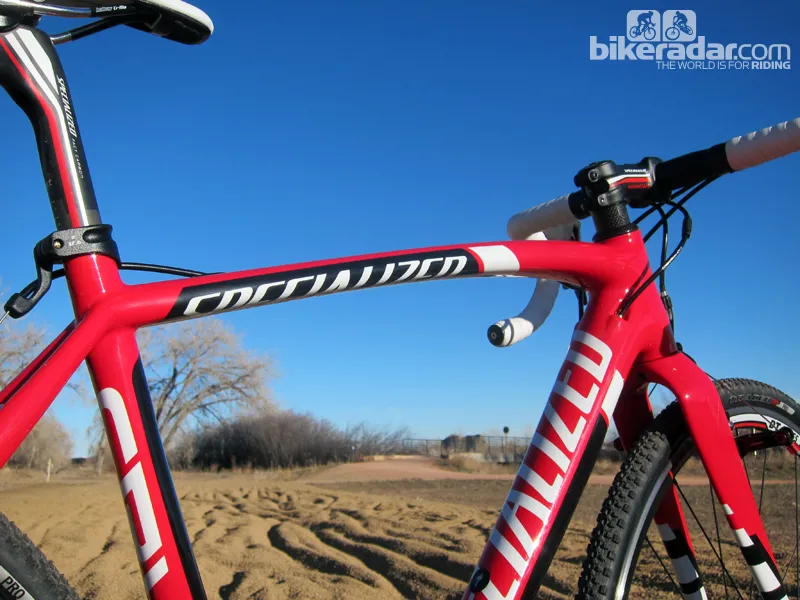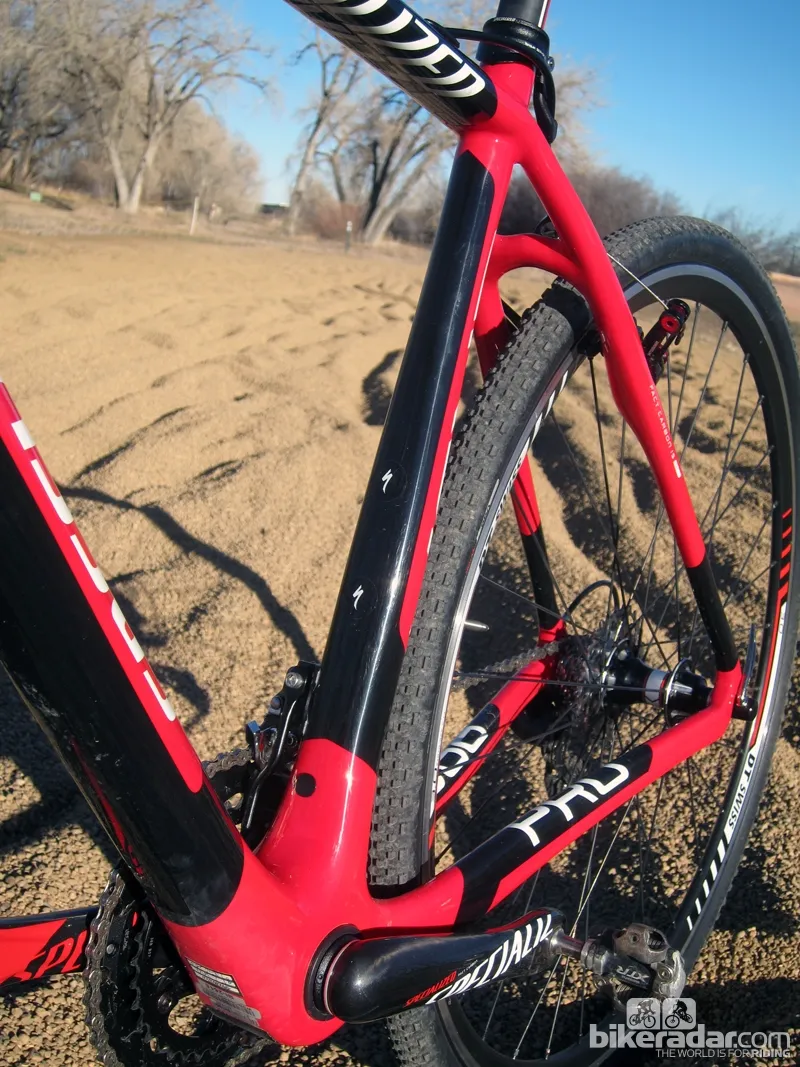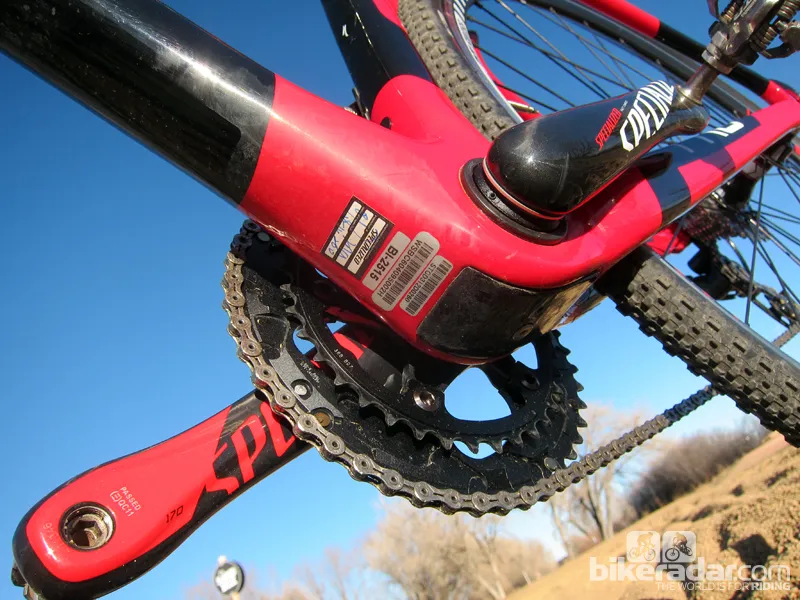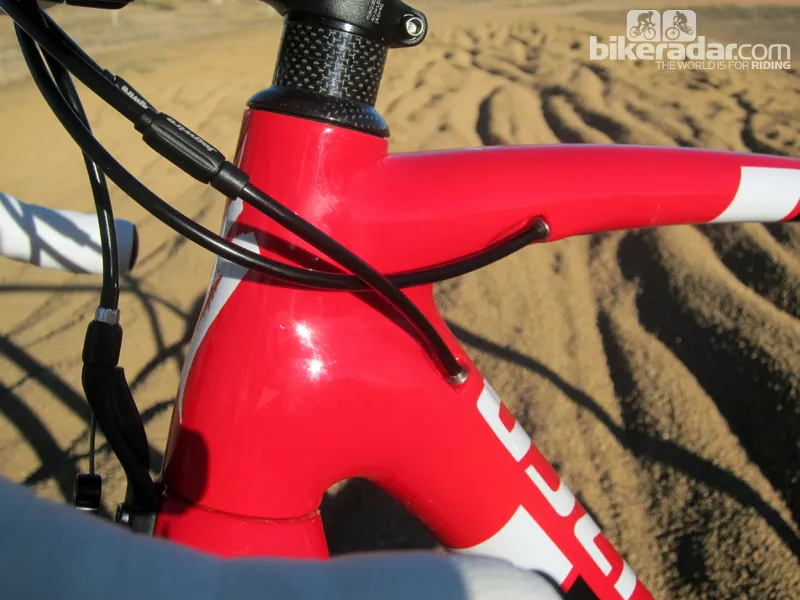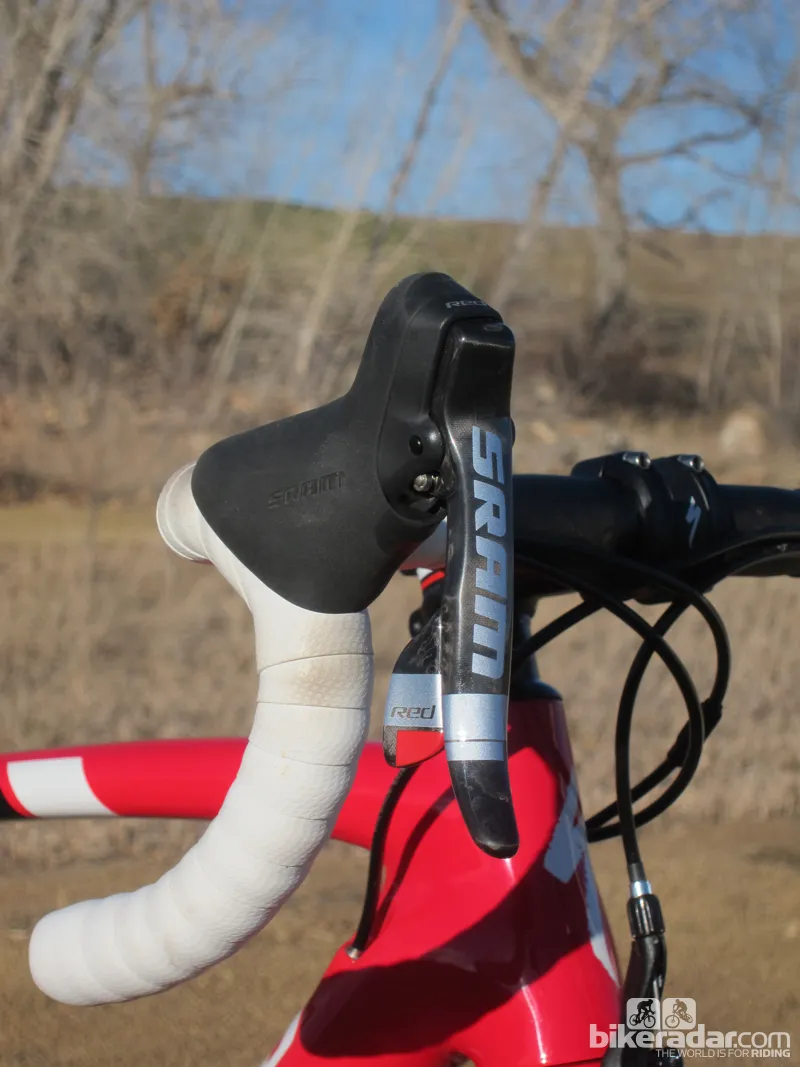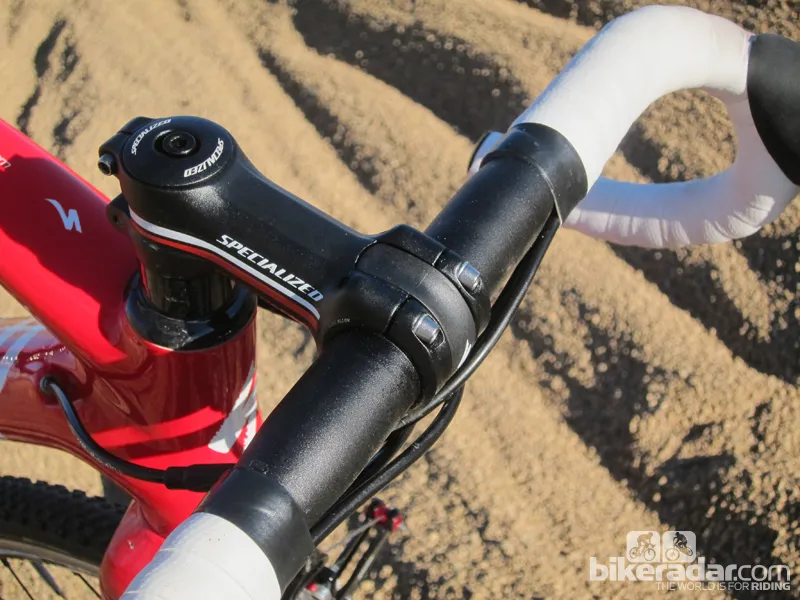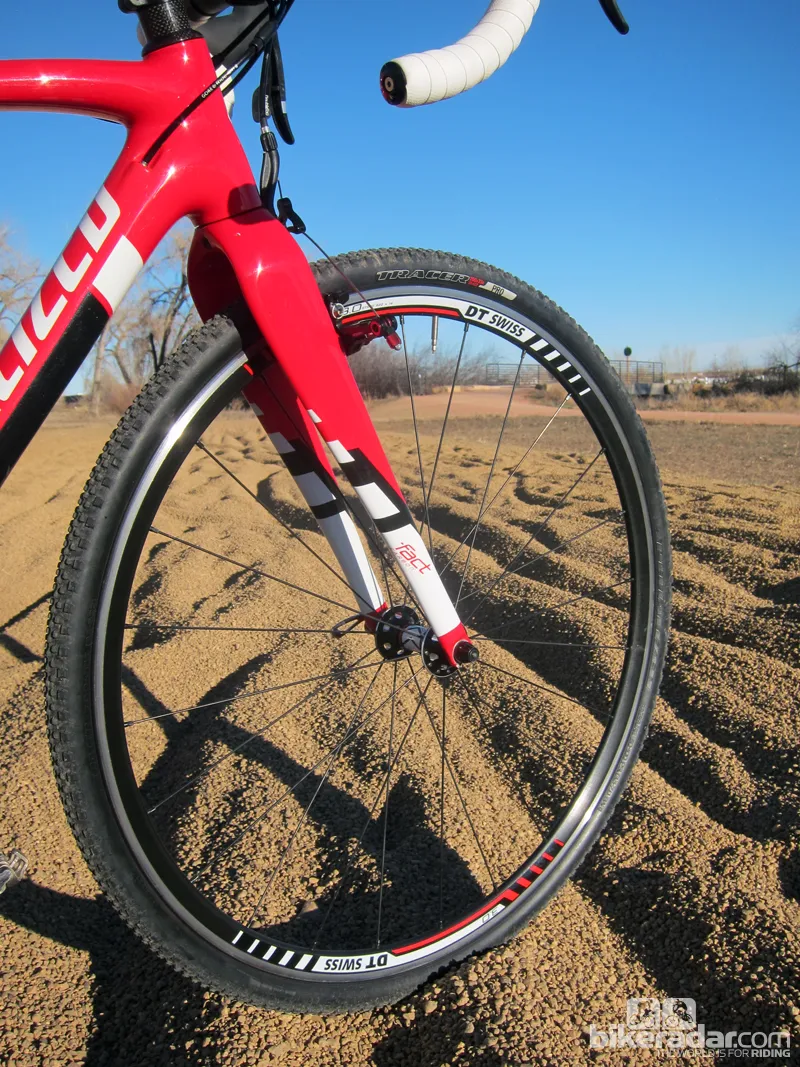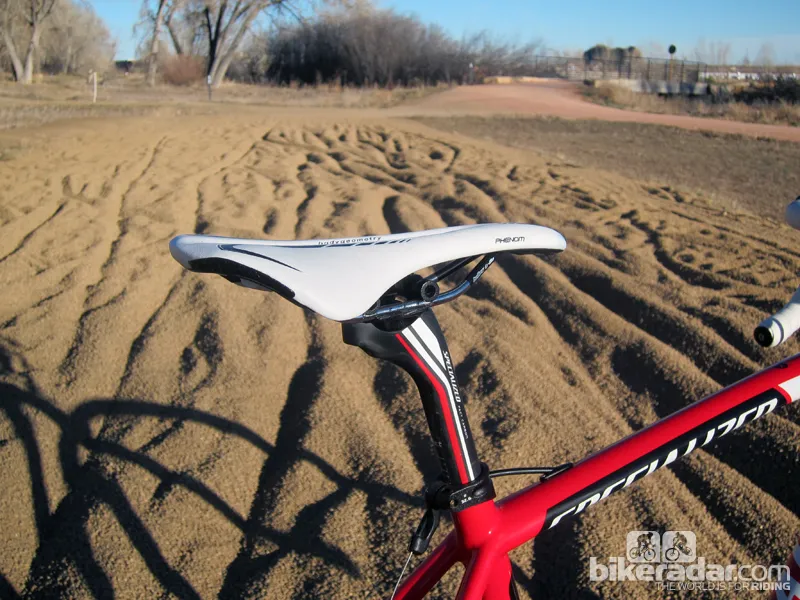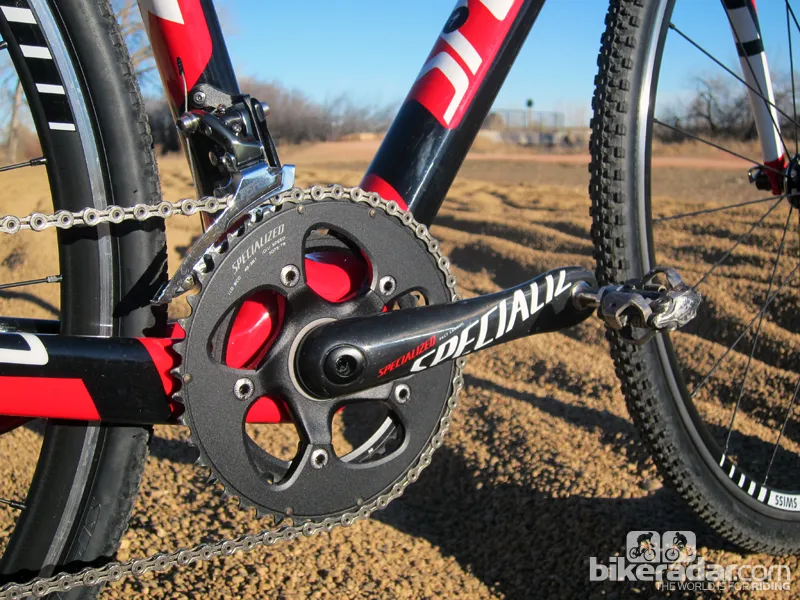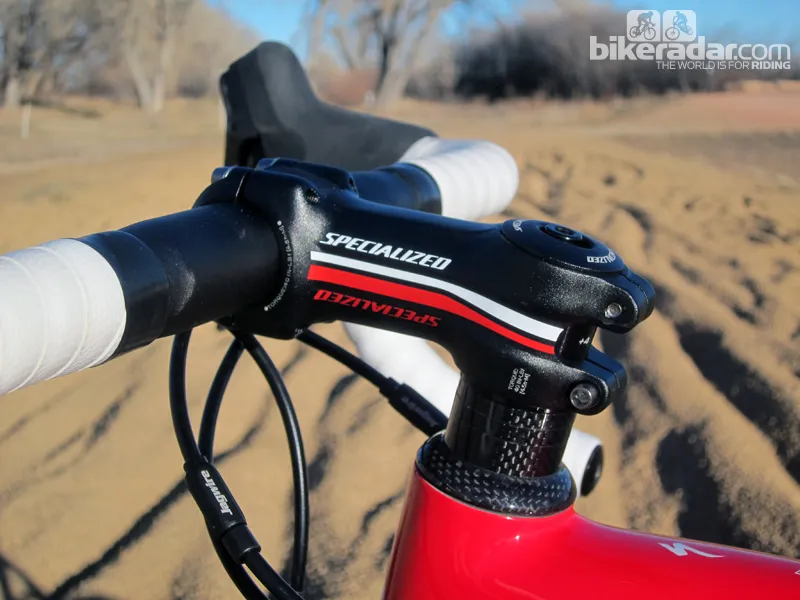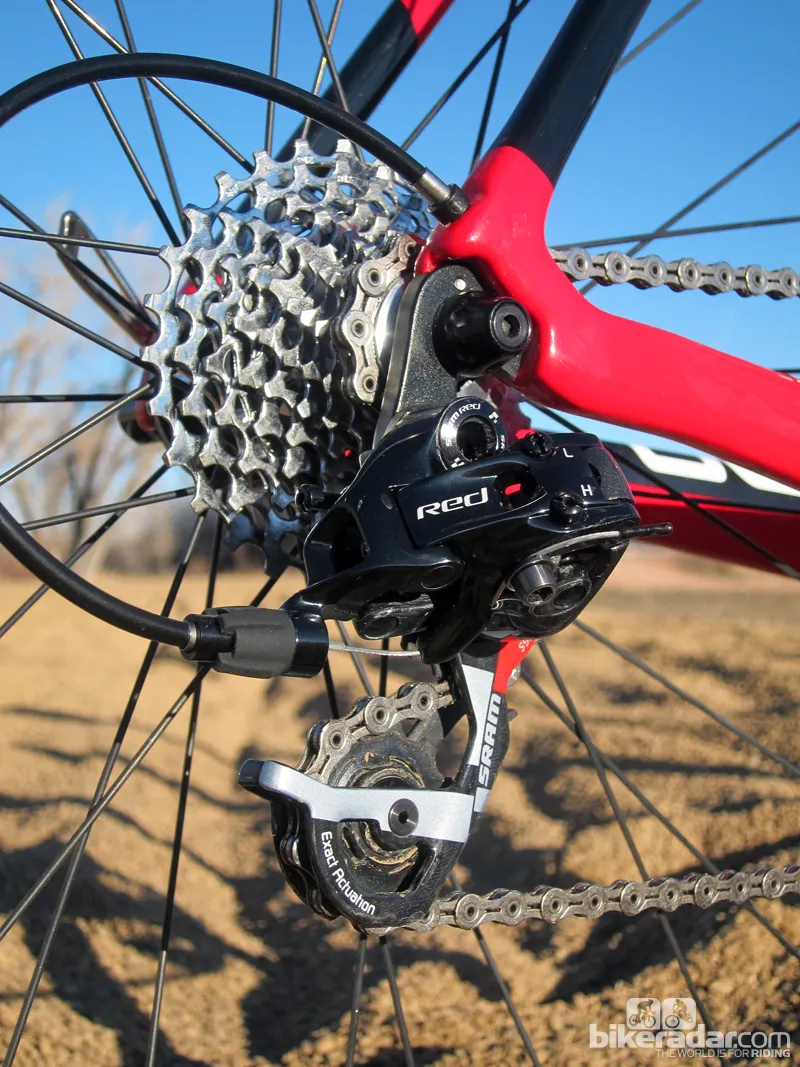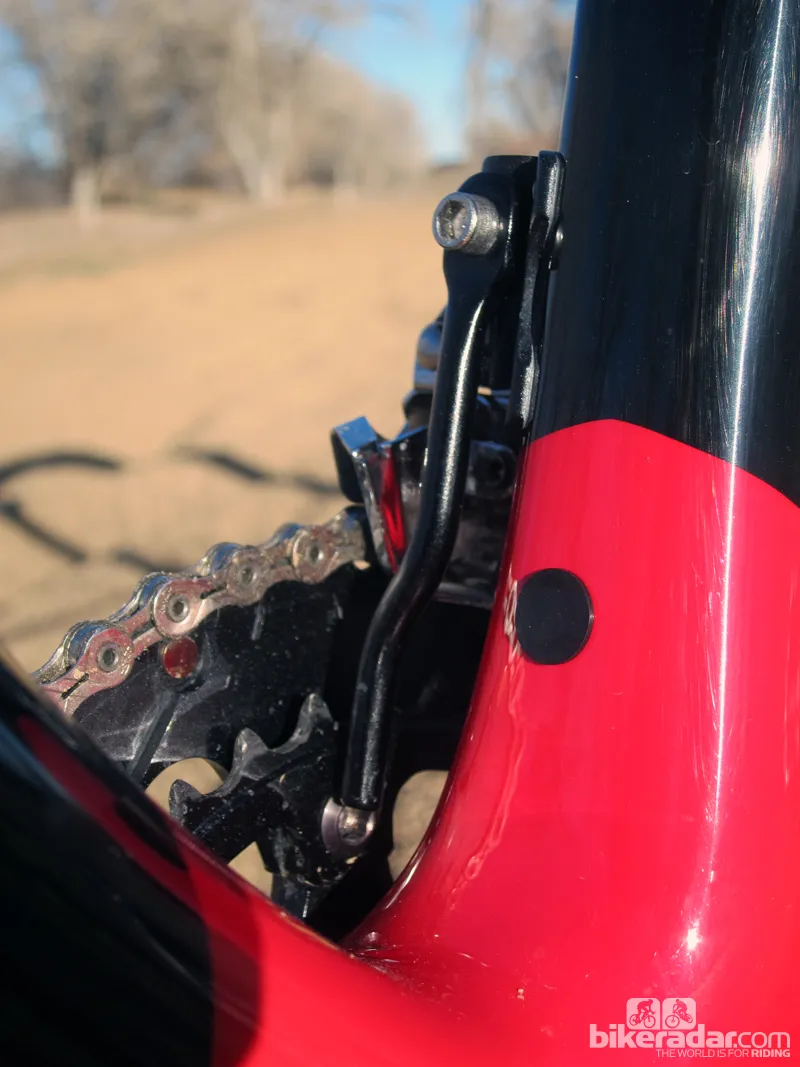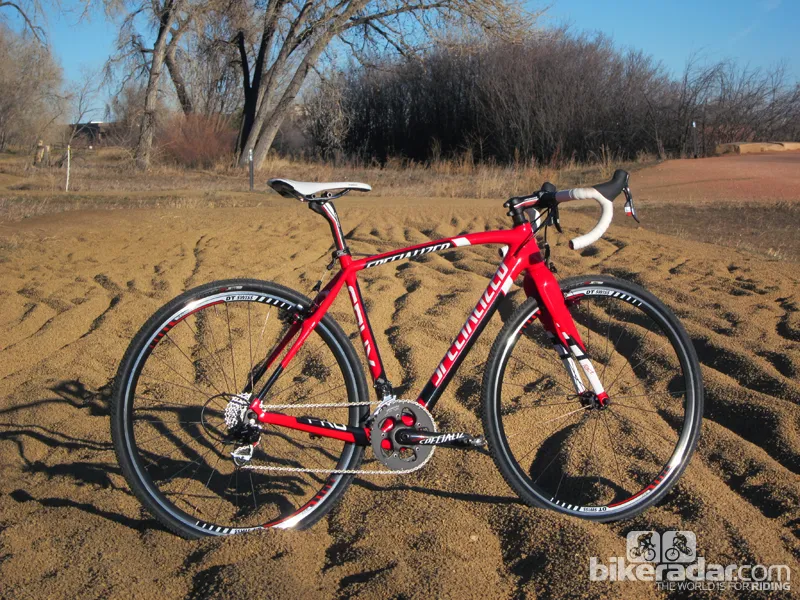Specialized's long awaited carbon fiber CruX builds upon the lessons learned from the alloy version, with new-school, low-slung geometry well suited to North American courses.
That it's lighter and more responsive than the alloy CruX is no surprise, but what we didn't expect was the impressive smoothness. The only things keeping this from being a top-shelf package right out of the gate are the so-so wheels and disappointingly narrow tires.
Ride & handling: Light, snappy, and quick handling but comfortable
Specialized's aim for the carbon CruX was to build a 'Tarmac for the dirt', and based on our experiences with the most recent SL4 flagship, that's a heady goal. That said, our time spent on the new CruX Pro Carbon cyclocross flagship suggests the aim has been met.
One defining characteristic of the Tarmac is its fantastic chassis stiffness, and the new carbon CruX certainly doesn't disappoint with its incredibly rigid front triangle and wonderfully stout rear end. The CruX Pro Carbon delivers outstanding pedaling efficiency and power transfer, and is extremely responsive to steering inputs.
We're well accustomed to the subtle difference in timing that's often required even on top-end 'cross machines, with just that slight delay between input and reaction. However, with the CruX there's a more immediate response to fierce stabs at the pedals or a quick flick of the bars.
It's brilliantly fast under power, with lots of liveliness and snap, and there's even a similar riding position, meaning current Specialized road bike owners will instantly find themselves right at home.
Just like on the Tarmac, comfort isn't exactly the CruX's strong suit, with the stout rear end flexing much less than many lightweight aluminum chassis or our current favorite 'cross cushion, the Cannondale SuperX Hi-Mod.
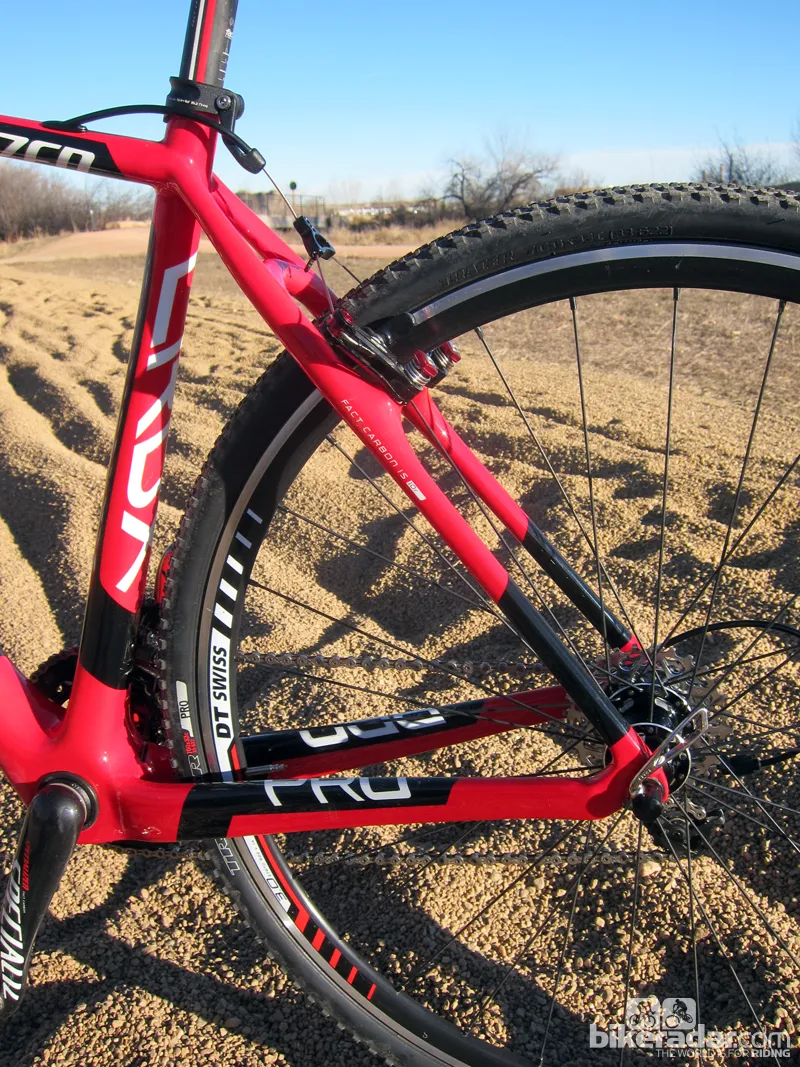
The seat stays don't look especially svelte but the damping balances this out
However, Specialized has done a wonderful job of damping vibrations and smaller bumps, as well as imparting a very balanced feel front-to-rear. You still feel impacts and bumps but it's almost as though the peaks are sliced off with the Specialized's carbon fiber sword. This was a welcome surprise, especially given how substantial the seat stays are here, and racers who put a higher priority on efficiency than comfort will find a lot to like.
The CruX's handling falls firmly in the new-world school of thought, with a very low bottom bracket – 71mm of drop for our 52cm tester – and steep seat tube angle but an otherwise neutral front end. The low center of gravity makes for extra stability in fast and slippery corners as well as quicker transitions from edge to edge – not to mention a lower leap when remounting after barriers and run-ups.
The slightly more forward saddle position puts you in a prime attacking stance for quickly getting on the gas, too, and we found the middle-of-the-road handling more than willing to confidently drift through the snowy and icy corners of a late Colorado winter. That low bottom bracket isn't as well suited for especially deep sand and mud, though, so keep your local conditions in mind.
Specialized – and its factory racers – have a solid record in 'cross racing so we also weren't surprised to find that all the discipline-specific features have been well addressed.
Tire clearance is generous all round, with a finger's worth of space through the wide-stance fork crown, seat stays, and chain stays, plus no shelf behind the bottom bracket shell on which mud can accumulate. The curved top tube is very flat on its underside, too, making it comfortable on your shoulder (or, rather, as comfortable as resting a rigid tube against your bare collarbone can be).
The CruX Pro Carbon's compact front triangle and an enormous down tube would normally preclude lifting the bike up and hefting it onto your shoulder but Specialized has made good adaptations here as well. The so-called 'Love Handle' indentation beneath the down tube genuinely does make for an easier grip (especially for riders with small or medium-sized hands) while the top tube's slight arc creates a bit more room in the front triangle without resorting to a level top tube – clever on both counts.
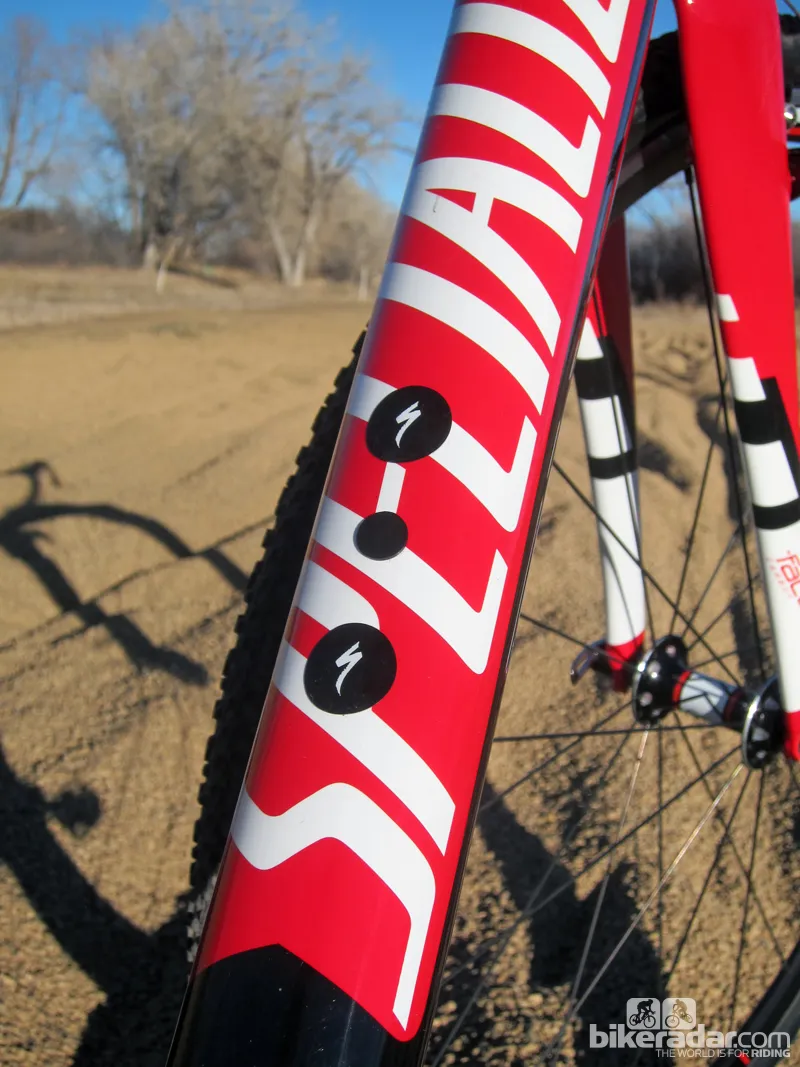
Mounts can be covered with round decals for a flush surface that won't snag your skinsuit
Cables are well protected to, with fully internal and carefully planned routing throughout. The derailleur and rear brake line both enter the frame just behind the head tube, the front derailleur exit point is covered with a rubber sheath, and the rear derailleur cable doesn't poke out until just above the rear dropout.
Cable replacements are expectedly tricky if you don't take care to feed a liner through as a guide first, but on the plus side there's a removable hatch on the underside of the bottom bracket shell to ease the pain. Moreover, the effectively weatherproof setup means you shouldn't have to do it as often.
And yes, as you would expect, the CruX Pro Carbon is light. Total weight on our 52cm tester is 7.72kg (17.0lb) – and that's with the mediocre stock aluminum clinchers (more on those in a bit).
Frame: Tarmac SL4 repurposed for the mud
Specialized really has done an admirable job of translating much of the Tarmac SL4's design language to the new carbon CruX. The down tube is similarly bulbous, the top tube boasts a comparable arc and shaping, and the seat tube similarly starts out round up top before transitioning to a rectangular profile down at the OSBB (Specialized's version of PF30) bottom bracket shell.
Just as on the Tarmac, the bottom bracket shell is molded in one piece with the very tall, asymmetrical chain stays – supposedly to increase drivetrain stiffness, which seems to work. And the tapered head tube is also slightly downsized to 1 1/8 to 1 3/8in to improve the ride quality over the standard 1 1/2in lower steerer diameter.
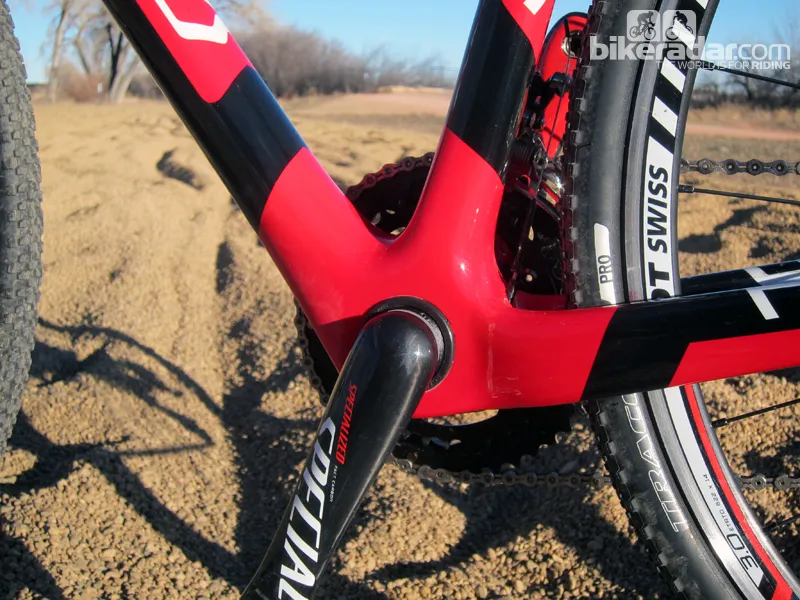
Specialized's OSBB oversized bottom bracket is fitted to the bulbous shell area
The seat stays have, of course, been beefed up relative to the Tarmac SL4's rather spindly pipes, and they're rather widely spaced in order to gain that precious mud clearance. That Specialized was able to wring such a composed ride quality out of the back is even more impressive when you note just how big those stays are.
Actual weight for our bare 52cm frame is 1,230g with rear derailleur hanger, water bottle bolts, and seatpost collar – 310g heavier than the similarly sized, S-Works level Tarmac SL4 we tested last January.
Likewise, the matching carbon CruX fork is far burlier than the one on the Tarmac, sporting the requisite increases in crown-to-axle length and tire clearance but also very deep, straight-bladed legs anchored in a monstrous carbon crown. Actual weight with a 190mm steerer tube is 480g.
Equipment: Function over flash but consider a wheel upgrade first and foremost
Specialized fits the CruX Pro Carbon with a somewhat eclectic parts package that includes SRAM's previous-generation Red DoubleTap levers and rear derailleur, a SRAM Force front derailleur and PG-1070 cassette, Avid Single Digit Ultimate cantilevers, DT Swiss Axis 4.0 aluminum clinchers, and Specialized's own FACT carbon fiber crankset shod with tight-ratio 39/46T SRAM chainrings.
The Specialized badge also graces the aluminum bar and stem, the Body Geometry Phenom Comp saddle, the multi-condition Tracer Pro tires, and the two-bolt carbon fiber seatpost.
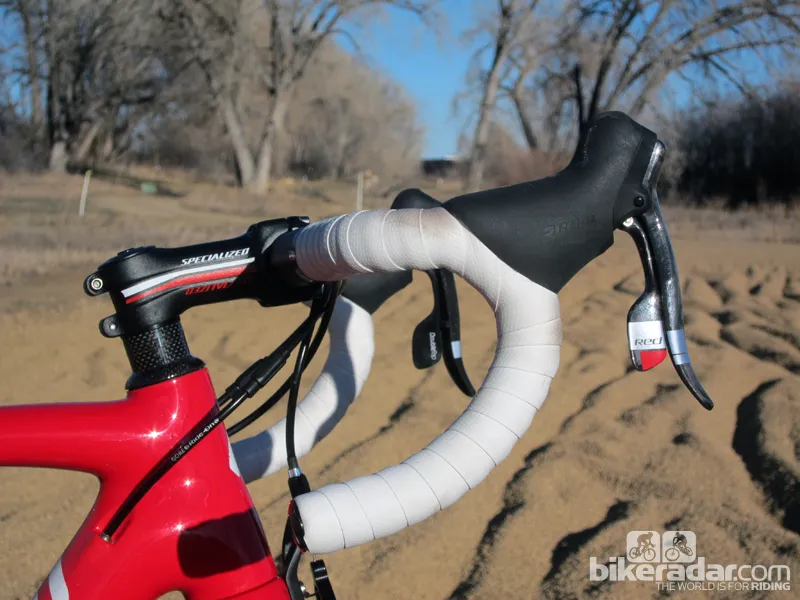
The aluminum bar features a compact bend with drops that are easy to reach
Some might question the inclusion of SRAM's older Red components on Specialized's flagship 'cross racer. But the stuff flat-out works – nearly as well as the newer Red in this application – and if it allows for a slightly lower price point then so be it.
Specialized has, however, included a Gore Ride-On sealed cable system as stock, and it's money well spent. Lever action is light and shift quality is precise, consistent, and chock full of feedback. While the front shift performance admittedly isn't quite as good as with SRAM's fantastic new Yaw-equipped model, that's largely offset by Specialized's choice of a steel-caged Force front derailleur and the tight-ratio chainrings.
More than two years since their debut, Avid's Shorty Ultimate cantilever is still one of the best options available, with ample power and control (at least in dry conditions), virtually zero flex, a positive lever feel, and relatively easy adjustment. We would have preferred Specialized to build the front brake in the higher-power, lower-profile configuration but that's easy enough to change at no extra cost.
Likewise, we were satisfied with the Specialized cockpit components. The Phenom Comp saddle is firm but extremely comfortable and supportive, the matching two-bolt seatpost is secure and easy to adjust (as long as you have a long Allen wrench to access the forward bolt), and the aluminum angle-adjustable stem and handlebar are reasonably lightweight and sufficiently impact-tolerant for cyclocross racing's frequent crashes.
Unfortunately, the one major letdown is the wheelset, which comes second only to the frameset in determining the overall ride quality of the bike. While the DT Swiss Axis 3.0 wheels ride well, they're heavy at 1,830g for the pair (without rim strips or skewers) and the rims are disappointingly narrow, too.
Those narrow rims also take their toll on tire volume. The Specialized Tracer Pro tires are light, roll quickly, and sport an impressively versatile tread but measure less than 32mm across in stock trim despite the 33mm labeling. We switched to a set of wider HED Ardennes wheels and regained that extra millimeter in width, plus a boost in volume.
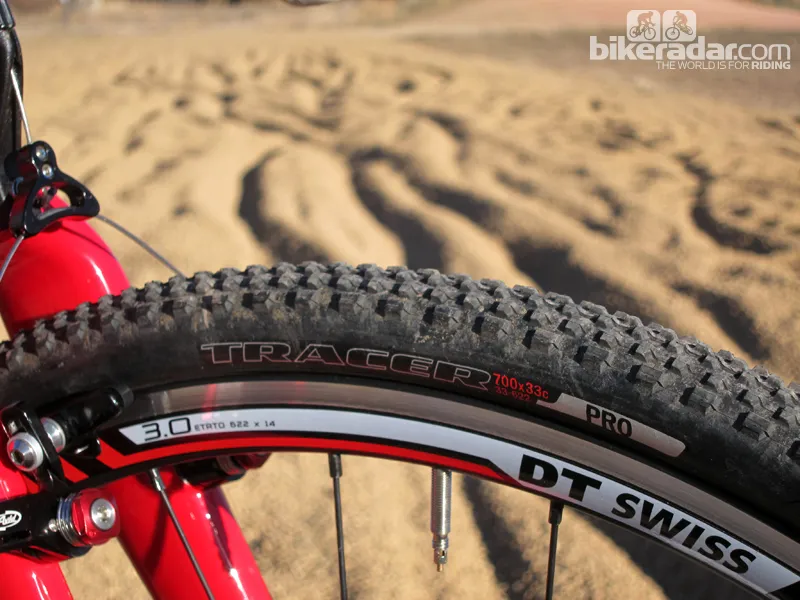
Specialized's Tracer Pro tires feature a low profile tread
Just as Cervélo does with its R-series of road bikes, Specialized anticipates that buyers of this flagship will already have their own race-level wheels to sub in – if that's the case, the US$4,400 asking price starts to make sense, particularly when flagships from other companies command upward of US$6,000.
Racers looking for top performance will have no choice but to factor that into the equation, as the chassis has far more performance potential than the stock wheels and tires let on. Swapping in a pair of top-end carbon tubulars can bring the weight down to below 7kg (15.43lb) with no other changes to yield the veritable rocket ship that's hidden within.
Provided you keep in mind that Specialized has supplied the CruX Pro Carbon as somewhat of a DIY setup with so-so stock wheels, there's little to fault on what is otherwise a fantastic race machine.

